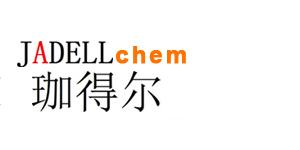Recombinant Mouse TGF-beta 1/TGFB1 (HEK293-expressed) 是一种多功能细胞因子,其控制许多生物过程,包括免疫,分化,肿瘤抑制,肿瘤转移,衰老,迁移,伤口愈合,细胞凋亡,细胞分裂,脂肪生成和成骨。
Synonyms
rMuTGF-beta 1/TGFB1; Transforming growth factor beta-1; TGF-β1; LAP
Species
MouseSource
HEK 293 Accession
P04202 Gene ID
21803 Molecular Weight
Approximately 12.8 kDa AA Sequence
ALDTNYCFSS TEKNCCVRQL YIDFRKDLGW KWIHEPKGYH ANFCLGPCPY IWSLDTQYSK VLALYNQHNP GASASPCCVP QALEPLPIVY YVGRKPKVEQ LSNMIVRSCK CS Biological Activity
The ED50 is <0.2 ng/mL as measured by mouse HT-2 cells. Appearance
Lyophilized powder. Formulation
Lyophilized after extensive dialysis against 4 mM HCl. Endotoxin Level
<1 EU/μg, determined by LAL method. Reconstitution
Reconstitute the lyophilized recombinant Murine TGF-beta 1/TGFB1 (HEK293-expressed) (rMuTGF-beta 1/TGFB1) to 100 µg/mL using ddH2O. Storage & Stability
Lyophilized recombinant Murine TGF-beta 1/TGFB1 (HEK293-expressed) (rMuTGF-beta 1/TGFB1) is stored at -20°C. After reconstitution, it is stable at 4°C for 1 week or -20°C for longer. It is recommended to freeze aliquots at -20°C or -80°C for extended storage. Shipping
Room temperature in continental US; may vary elsewhere. Background
TGFβ1 regulates cell proliferation, growth, differentiation and cells movement. TGFβ1 also has immunomodulatory and profibrogenic effects. Lack of TGFβ1-dependent growth control may result in oncogenesis: papillary, follicular and anaplastic thyroid cancers, prostate, breast and uterine cervical cancer, oesophagus, gastric, colorectal and liver cancers, NSCLC, and malignant melanoma. Excessive TGFβ1 activity is an integral part of the fibrotic processes occurring in the response to injury[1]. TGFβ1 can induce renal fibrosis via activation of both canonical (Smad-based) and non-canonical (non-Smad-based) signalling pathways, which result in activation of myofibroblasts, excessive production of extracellular matrix (ECM) and inhibition of ECM degradation[2]. TGF-β1 induces anti-inflammatory regulatory T cells (Treg), and inflammatory T helper 17 (Th17) cells in combination with interleukin-6[3]. |



